Stepping stone in gardens
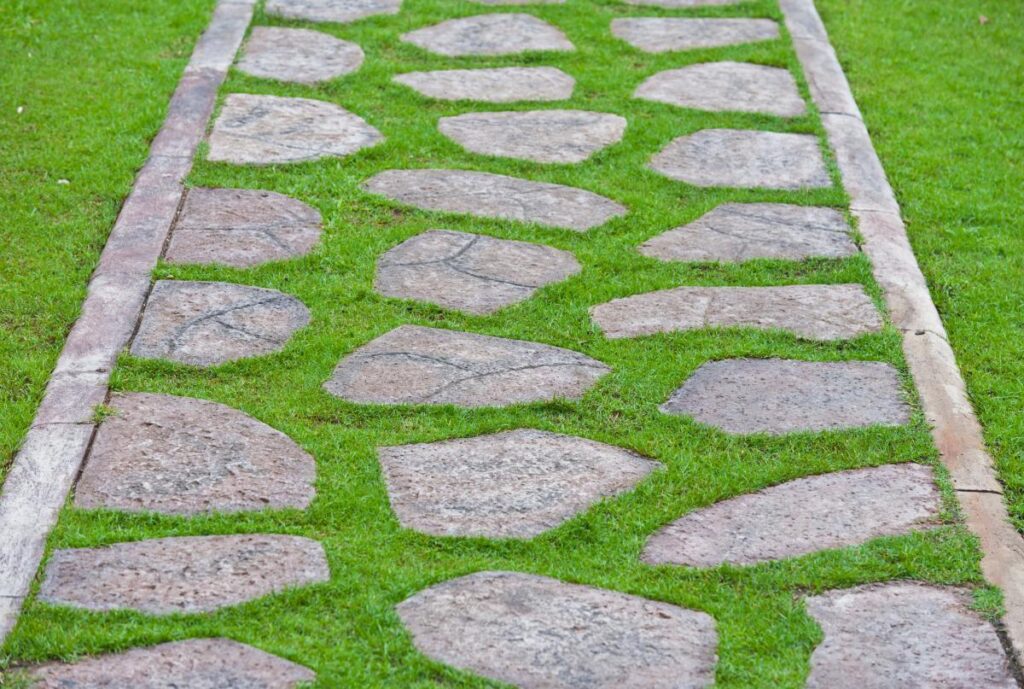
To pave the paths in the garden can be quite expensive and demanding. But there is another solution – stepping-stones. They do not necessarily have to be flat stones set in the lawn, gravel or pebbles. The treads can be made of different materials.
Stepping-stones also give your garden a natural look and more nature-like character. These stones can really be prominent, large, and visible, or, on the contrary, inconspicuous and discrete. They can be lined in a line like a seam of thread, or there can be more lines. They could be seemingly randomly placed, or placed symmetrically, according to specific geometric rules. Stepping-stones set into the lawn have the most natural look, but they could be also set into a gravelled area or an area that is filled with pebbles. An advantage of this is great absorption of water precipitation. The stepping area remains without pools of water and mud. The whole paving is not water-soaked. Precipitation water, melting snow, or ice and hailstones pass straight through the stones and only then they soak into the ground.

Stepping-stones can be made of real flat stones of different rocks. They can also be made of concrete, plastic, or wood, they can even be made of lacquered bricks. On the other hand, they can be completely missing, the whole area can be filled with gravel or river pebbles. This solution does not require complicated maintenance. Furthermore, gravel is a quite cheap material. You only must dig a 30cm deep ditch. After taking the soil out, you can use it anywhere in the garden. Then, you fill the ditch with stone aggregate. You do not even have to install kerbs. Although without kerbs, it will be much easier for weed and grass to spread from the sides.
In any case, the less stable but well absorbing material in combination with stepping-stones seems to be the ideal solution from the above mentioned.
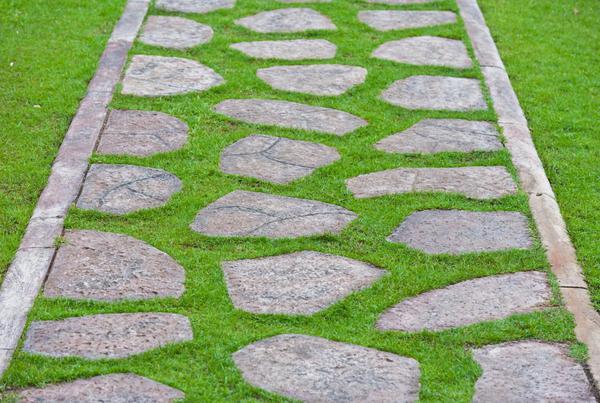
From all of the stepping materials, stone seems to be the ideal one. It looks the most natural. It just belongs in the outside. Especially if you use a local, traditional rock. The combination of more kinds of rock looks unbalanced, kitschy, artificially, over-embellished. Even though only natural material were used in these cases. Otherwise, stone is solid, durable, it withstands abrasion and frost. It does not require maintenance.
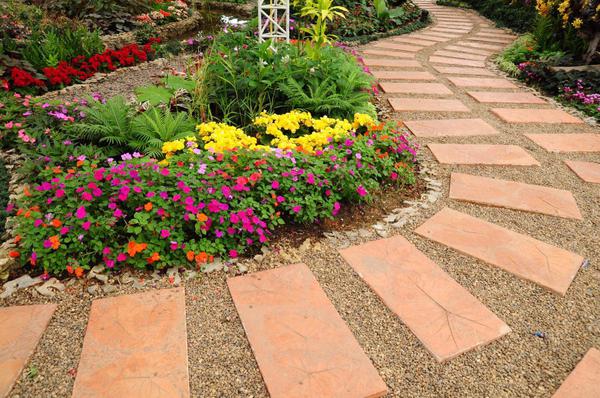

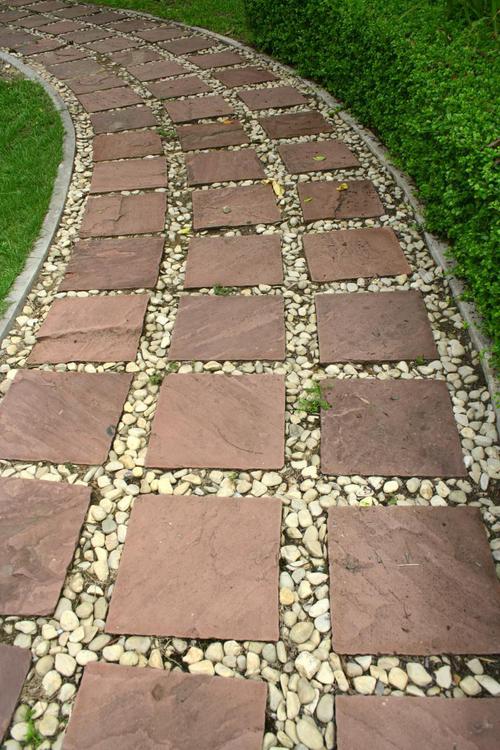
Ideal materials for stepping-stones are andesite, orthogneiss, slate, marble, or limestone. You can use stones of different sizes and shapes. The only condition is that the view side (stepping side) is as flat as possible. Stones can be of irregular shapes – circular, semi-circular, square, oblong, oval etc. In the case of artificial stone (concrete) the shapes can be stylized. The surface and structure might create the look of natural stone, but otherwise they can have the shape of leaves or wood.

Natural stone can be raw or worked into desired shape. It is not recommended to polish the stepping surfaces. During wet weather, the stepping-stones could get overly slippery. In any solution that you might choose, the stepping elements (gravel, pebbles) should be in harmony with other stone (but also wooden or concrete) elements in the garden. Before you finally place the stepping-stones, it is important to try out the length of your steps. Then, place the stones so that you could walk as easily as possible. If you have little children, you need to place stones closer to each other and use more of them. Anti-slipping surface of chosen material is also important. If you choose gravel or pebbles, it is ideal to mix two different fractions, it makes the area denser.
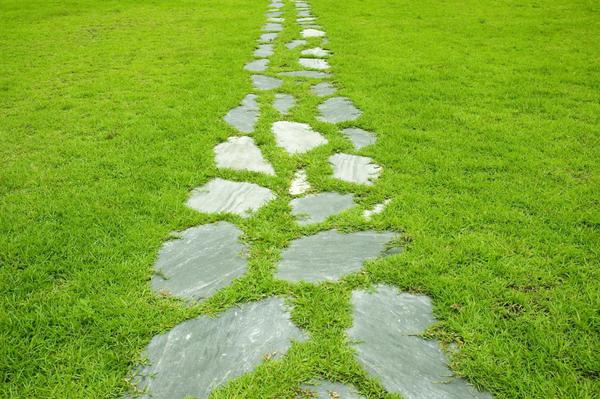

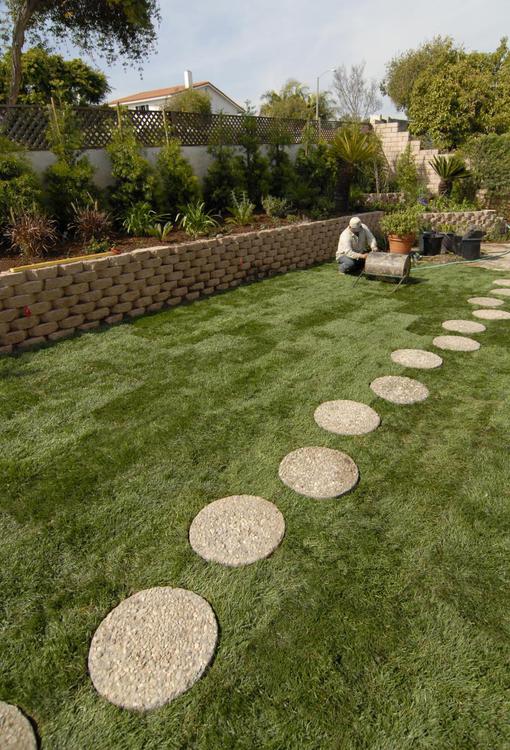
Source: www.ceskestavby.cz
